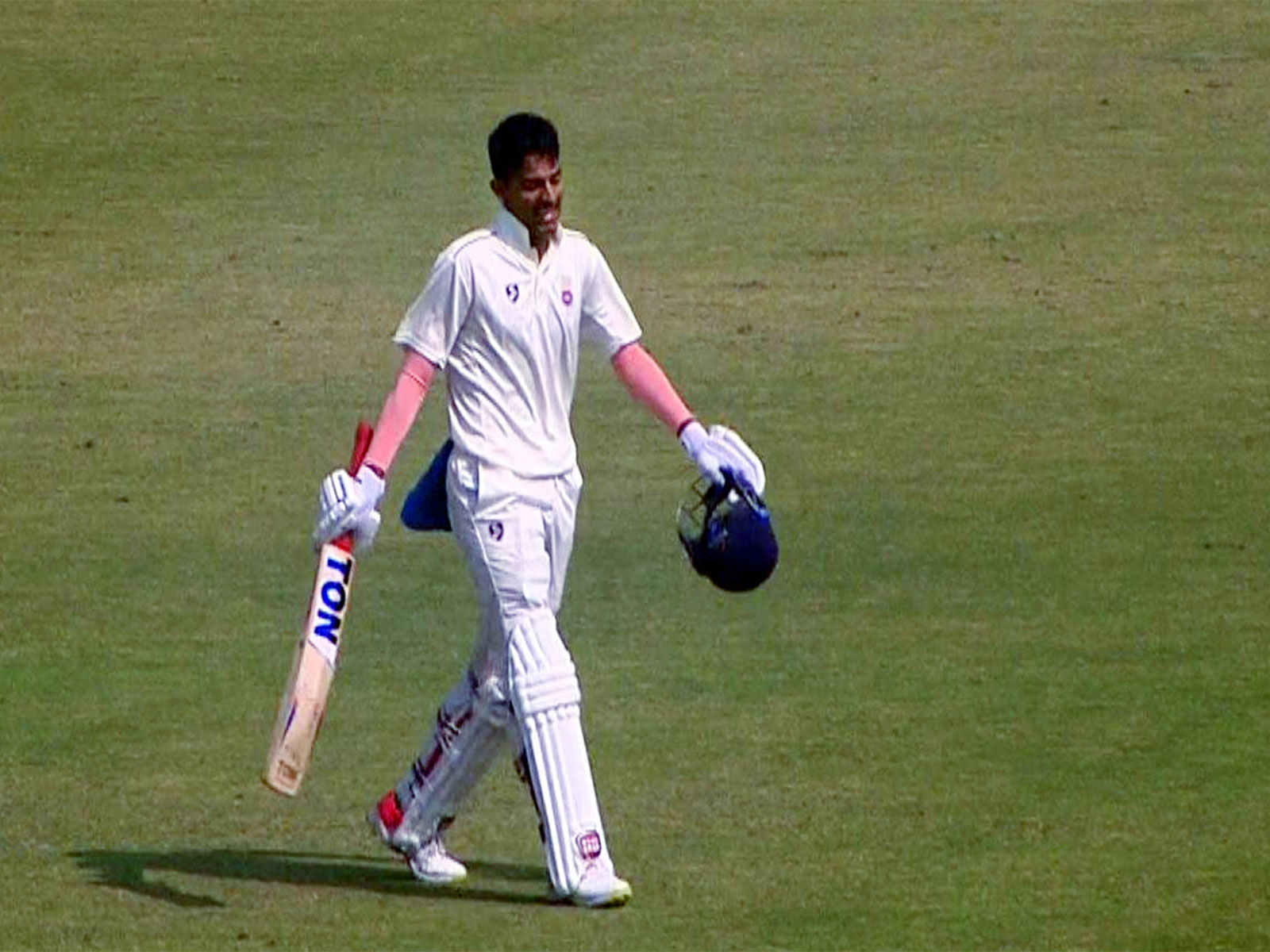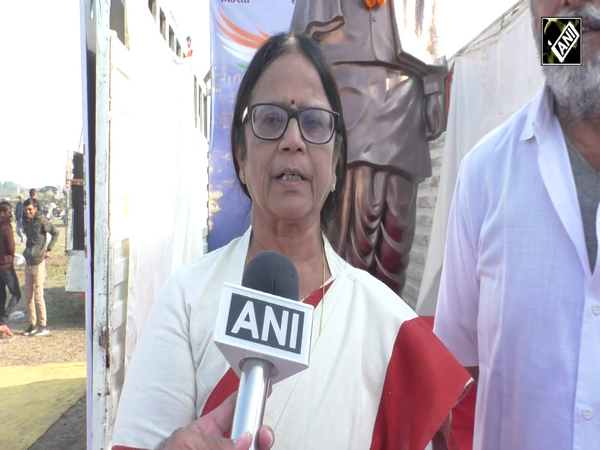A close, statistical look into India's home dominance ahead of Tests against England
Jan 21, 2024

New Delhi [India], January 21 : As India prepares for their high-profile five-test match series at home against England, the Asian giants' home dominance is at the focus of English cricketers and fans across the world alike.
The pacey, fast and bouncy wickets of overseas countries will now take a backseat and both sides will play some really physically and mentally exhausting cricket over the course of the next one and a half months or so on spin-friendly and turning Indian wickets.
India's dominance at home is no secret. Over the last few years, Ravichandran Ashwin and Ravindra Jadeja teaming up to tear high-class batting line-ups into oblivion has become a common sight.
Batters like Virat Kohli, Cheteshwar Pujara, Ajinkya Rahane, KL Rahul, Rohit Sharma, Rishabh Pant, etc. earned a huge name for themselves with their top-class performances in conditions where even the very best failed to buy a run.
The teams full of superstars have struggled to win even a Test match, let alone a whole series, with a draw being the most positive result they get. Wins have not come in plenty for the visiting countries and when they do, it has made headlines.
Interestingly, it was a series loss to England at home by 2-1 during the four-match Test series back in 2012-13 that kicked off a whole new era of supremacy at home for Team India in the longest format of the game.
With an impeccable home record, India has become a massive brand ambassador--a whole advertisement in itself for tests--and a key reason for it is their statistical supremacy over others in familiar spinny, bamboozling dustbowls.
Here is a look at India's supremacy at home since that famous series loss to England:
-Team performances
After a shameful 2-1 loss to England in a series back in December 2012, everyone expected Team India to bounce back. But India's run since then has been monumental and one for the ages. Since then, India has played 46 Test matches at home, having won 36 of them.
India has lost only three Test matches since then and has drawn seven remaining games. Their win percentage is a massive 78.26. Two of these losses have come against Australia, while one has come against England.
Their win percentage is only matched by Australia at its peak from 1998-2007, a timeline during which it won 47 Tests at home, lost three and drew nine, translating into a win percentage of 79.66 per cent.
Since the series loss to England back in 2012, India has gone on to win 16 successive Test series at home. Australia is India's distant rival once again, managing 10 successive Test series wins each from 1994-2000 and then from 2004-2008. The fact that India could win so much at once speaks volumes about their dominance and experience of playing at home.
-Batting performances
Over the years, India has witnessed some memorable batting performances at home from the willow of stars like Virat Kohli, Shikhar Dhawan, Cheteshwar Pujara, Ajinkya Rahane, MS Dhoni, Rohit Sharma, Rishabh Pant, etc.
The massive heaps of runs scored by them have played a vital role in India's victories at home. Home crowds absolutely love to have their heroes smash world-class bowlers left and right in testing but familiar home conditions and no wonder why stadiums are always packed.
Since 2013, Virat has been the leading run-scorer on Indian soil, scoring 3,629 runs in 43 Tests at an average of 61.50 in 65 innings, with 12 centuries and eight fifties. His best score is 254*.
next two spots are occupied by Pujara (3,109 runs in 44 matches and 68 innings at an average of 49.34, with seven centuries and 19 fifties) and Rohit (2,002 runs in 24 Tests and 36 innings at an average of 66.73, with eight centuries and six fifties).
In the top ten run-scorers in India, there is only one name that features and that is England's Joe Root, who has scored 859 runs in nine Tests at an average of 47.72 with two centuries and four fifties.
Steve Smith is another batter who has done well, scoring 805 runs in 10 matches and 19 innings at an average of 50.31, with three tons and a fifty in 19 innings. While these figures are great considering the number of games played, they pale in comparison to those of the Indian stars.
A lot of big stars like David Warner (414 runs in 10 matches at an average of 21.78 with three fifties in 19 innings), Jonny Bairstow (380 runs in seven matches at an average of 31.66 with three fifties in 13 innings), Alastair Cook (369 runs in five matches at an average of 36.90 with a century and fifty in 10 innings) and Faf Du Plessis (202 runs in seven matches at an average of 15.53 with two fifties in 13 innings) among others have struggled to replicate their success at home or elsewhere in India.
-Bowling performances
India has won a lot of matches at home, with its bowling playing the biggest role. Indian spinners bowling into the roughs created on the pitch and making the best of the best dance to their tunes has become a common sight. Debates over turning pitches pick up at the moment when the cherry starts to do its tricks in India.
Ashwin (283 wickets in 46 Tests at an average of 19.63 and a strike rate of 45), Jadeja (191 wickets in 39 Tests at an average of 20.16 and a strike rate of 52.5) and pacer Umesh Yadav (83 wickets in 27 Tests at an average of 25.60 and a strike rate of 49.1) have been vital to India's success at home.
In the land of spinners, Australian legend Nathan Lyon has gathered a lot of success, with 56 wickets in 11 Tests at an average of 27.35 and a strike rate of 51.7. Coming to overseas spinners, he is a rare oddity who has achieved great statistics in India.
Pacers like Ben Stokes (13 wickets in nine matches at an average of 39.23 and a strike rate above 68), James Anderson (12 wickets in six matches at an average of 28.41 and a strike rate of 72.4), Mitchell Starc (nine wickets in six matches at an average of 53.66 and a strike rate of 89.6), Pat Cummins (11 wickets in four matches at an average of 32.81 and a strike rate of 60.2), Kagiso Rabada (nine wickets in six matches at an average of 44.00 and a strike rate of 92.6), Stuart Broad (eight wickets in five matches at an average of 40.75 and a strike rate above 86) are some heavyweights who have not made the impact in Indian conditions that they are used to making elsewhere.
Since 2013 till now, Indian spinners have combined to take a total of 594 wickets in India, as compared to just 347 by visiting spinners. Indian seamers have also outdone their foreign counterparts, with 258 wickets in comparison to 224 scalps by visiting seamers.
Squad for the first two Tests vs England: Rohit Sharma (C), Shubman Gill, Yashasvi Jaiswal, Virat Kohli, Shreyas Iyer, KL Rahul (WK), KS Bharat (WK), Dhruv Jurel (WK), Ravichandran Ashwin, Ravindra Jadeja, Axar Patel, Kuldeep Yadav, Mohd. Siraj, Mukesh Kumar, Jasprit Bumrah (VC) and Avesh Khan.



















